 |
 |
 |
| |
Early Treatment with Direct-Acting Antivirals Saves Medical Costs in Non-Cirrhotic Patients with Chronic Hepatitis C Virus Infection in the United States
|
| |
| |
Reported by Jules Levin
AASLD 2018 Nov 9-13 San Francisco
WHO SHOULD BE SCREENED, we are NOT SCREENING POPULATIONS clearly that should be screened
from Jules: from the very first days of new DAAs availability 5-6 years ago it was clear that early treatment not only is cost savings in the long run but also saves more lives and avoids the affects of advancing HCV disease and extra hepatic manifestations. But federal and local officials refused to recognize this clear loin, that it would have been less costly in terms of government & healthcare costs and cost effective to treat early, as soon as possible & feasible. But, no, officials ignored this. Here we are years later with this study analyzing data that supports the point that early treatment is COST EFFICIENT, saves money & saves lives too. There should be federal and state funded HCV elimination programs that are truly invested in to accomplish this goal, and all HCV+ should be treated early, we need universal routine screening for all in the USA, for a curable disease that saves money if treated, with 95%+ cure rates. When the CDC first announced their recommendations to screen all baby boomers I criticized them saying you are missing the others, back then it was about 40% who were nit baby boomers, since then the young adults with HCV problem has obviously emerged. We should be screening ALL. Here is a great example of NOT SCREENING OBVIOUS POPULATIONS, in FQHCs youth who use drugs only 33% are screened for HCV:
HCV Testing Among Adolescents and Young Adults in a National Sample of Federally Qualified Health Centers - (10/10/18)
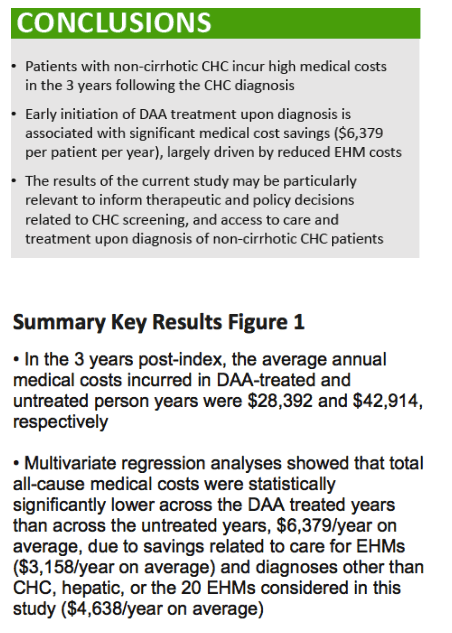
program abstract
Background: Sustained virologic response is associated with a reduction in the progression or development of hepatic complications and extra-hepatic manifestations (EHMs), which may result in healthcare cost savings. Using a US sample of non-cirrhotic patients diagnosed with CHC in the era of highly effective novel DAAs, we quantified the healthcare cost savings associated with initiation of DAAs within 3 years (yrs) of first CHC diagnosis.
Methods: Adults first diagnosed with CHC from 2013 to 2015 were analyzed in the Optum Clinformatics® Data Mart, a de-identified US claims database. Patients were excluded if they had cirrhosis at the time of CHC diagnosis (index date) or received interferon and/or ribavirin-only therapy prior to first DAA (for the DAA-treated cohort) or before the end of follow-up (for the untreated cohort). Patients had at least 1 complete yr of follow-up post-index up to a maximum of 3 yrs. Medical costs (charged amounts, 2017 US$) and DAA-treatment status were measured for each complete post-index yr. Both all-cause and disease-specific medical costs were investigated. Medical costs related to hepatic complications (11 pre-selected diagnoses), HCV care (including HCV management during treatment), and/or EHMs (21 pre-selected EHMs, including costly and/or prevalent conditions such as cardiovascular disease [CVD], chronic kidney disease, depression, fatigue, malignancy, or type 2 diabetes [T2DM], among others) were classified based on diagnosis codes associated with each claim. Differences in medical costs between DAA-treated and untreated cohorts across the 3 yrs post-index were estimated using adjusted multivariate regression models.
Results: Of 3,069 eligible patients (62% male; mean age: 51 yrs), 852 (28%) were initiated on a DAA during the study period. At index date, 30 (1%) had hepatic complications and the most common EHMs were fatigue (13%), T2DM (11%), and CVD (9%). The total all-cause medical costs were statistically significantly lower across DAA-treated yrs than across the untreated yrs, $6,379/yr on average, due to savings related to care for EHMs ($3,158/yr on average) and other non-hepatic/non-EHM conditions ($4,638/yr on average).
Conclusion: Non-cirrhotic CHC patients incur high medical costs after their first CHC diagnosis if left untreated. However, initiating DAA treatment within the first 3 yrs is associated with significant medical cost savings, largely driven by reduced extrahepatic and other non-hepatic/non-EHM costs.
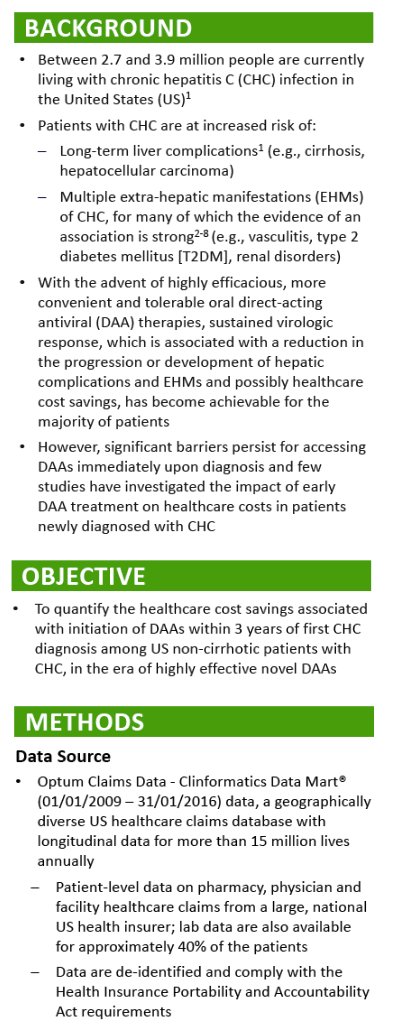
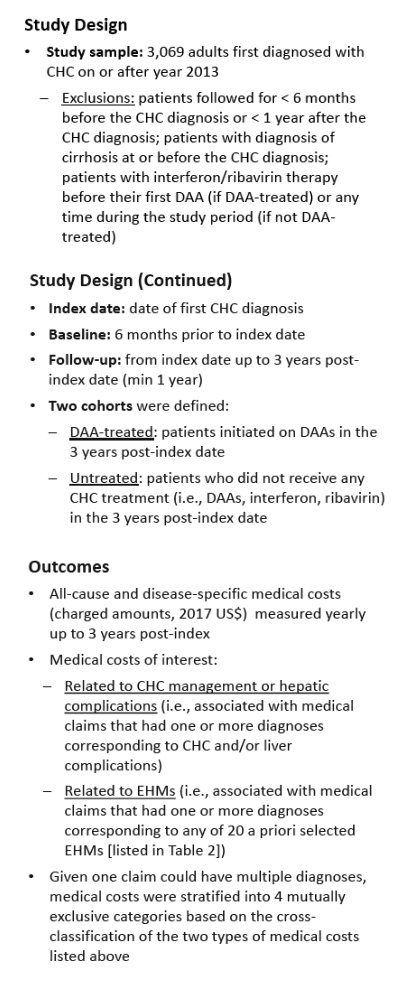
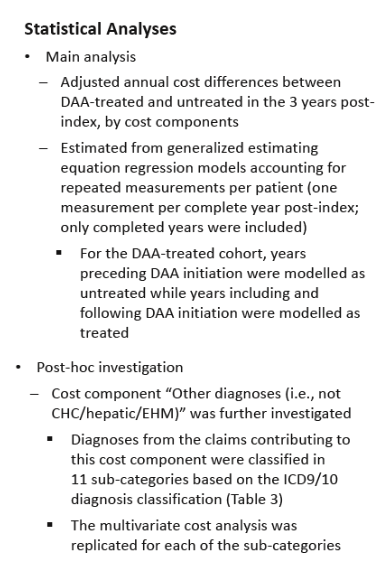
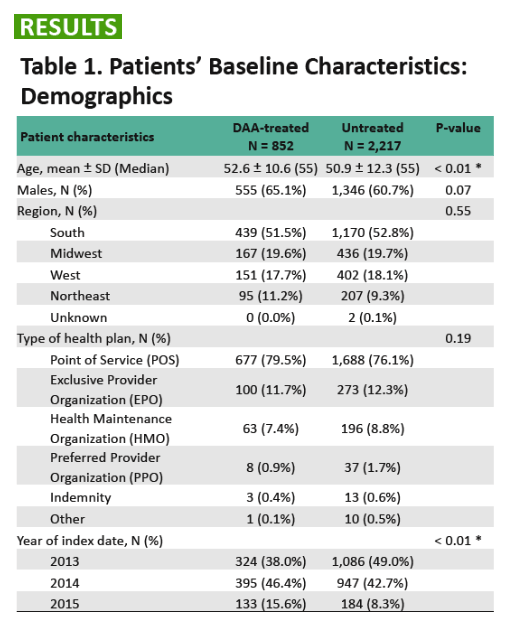
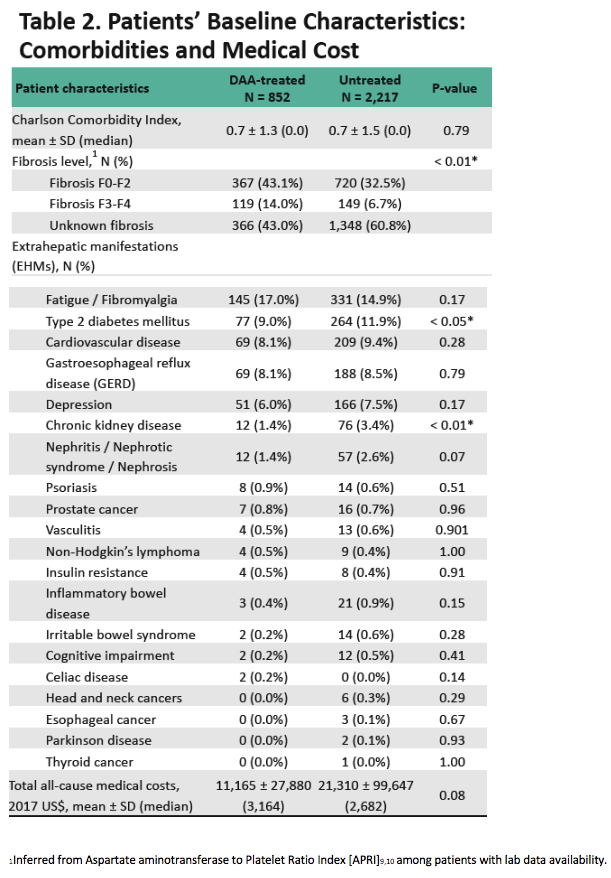
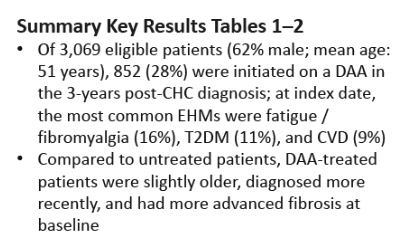
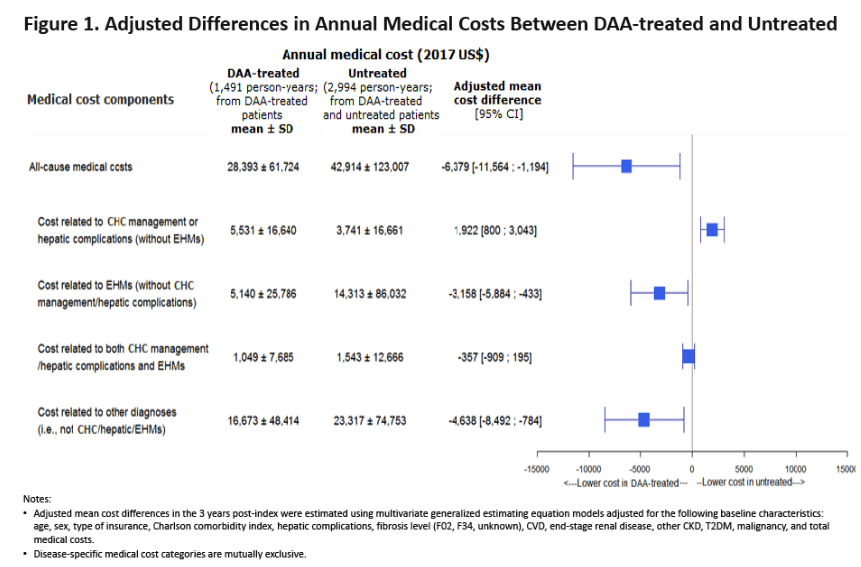
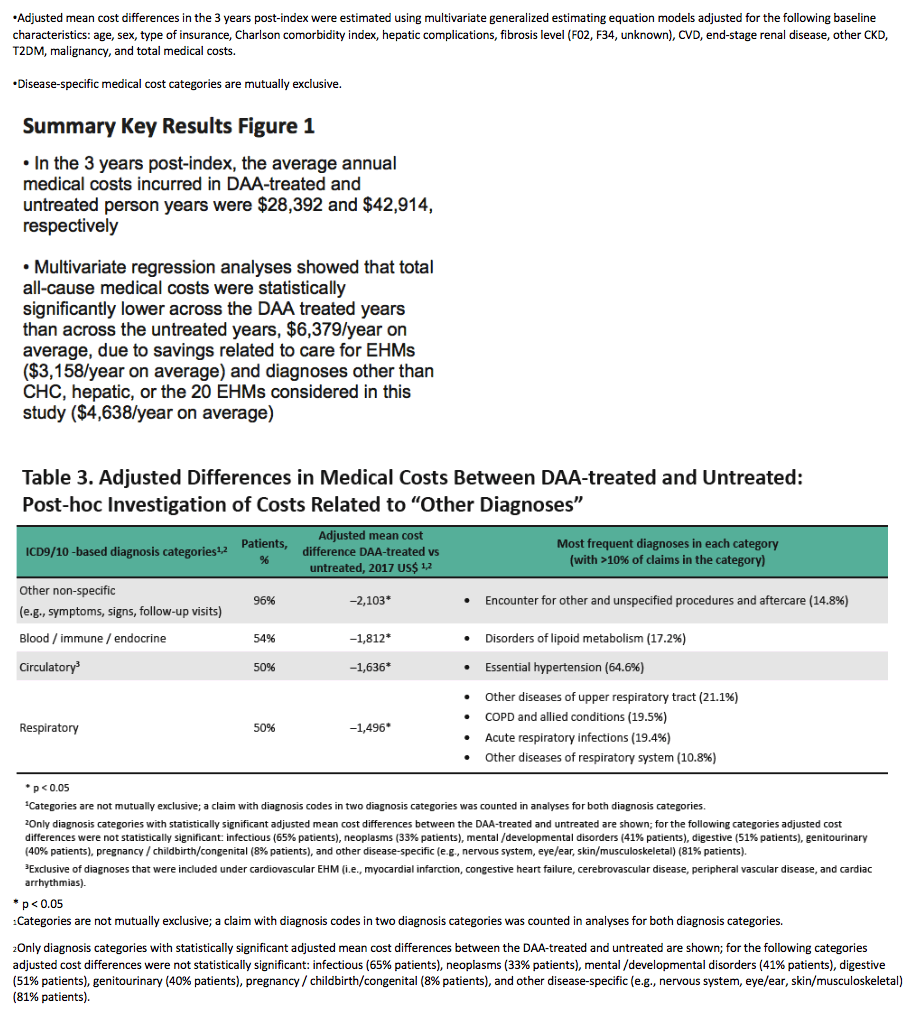

|
| |
|
 |
 |
|
|